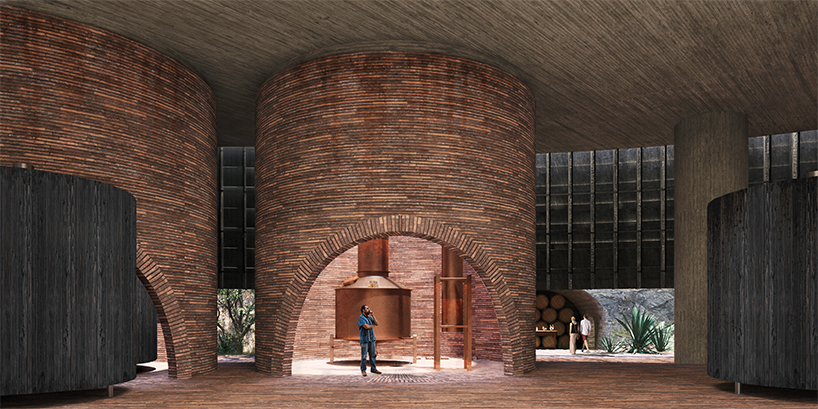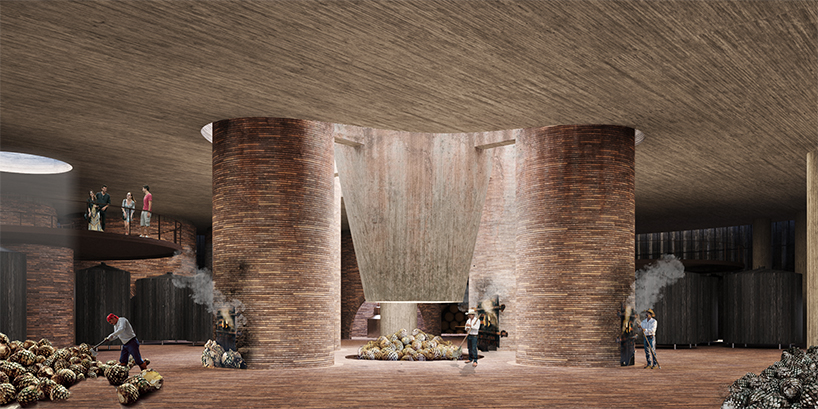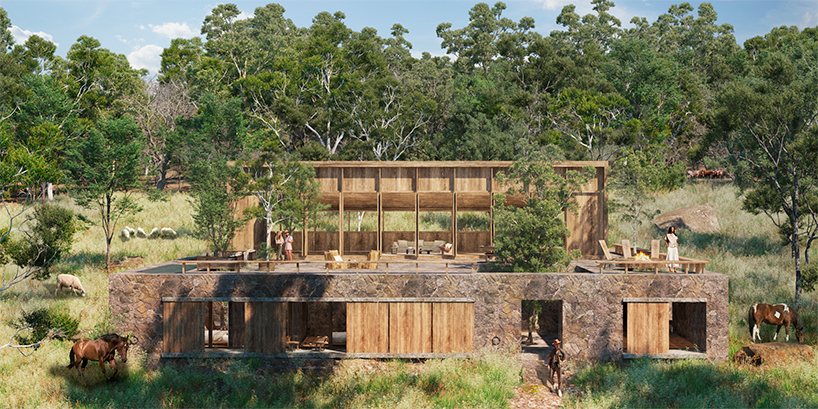world’s first biodynamic tequila distillery crowns top of extinct volcano in mexico
biodynamic community: imagining a new agro-tourism ecosystem
Esrawe Studio collaborated with architect Francisco Pardo to design the world’s first biodynamic tequila distillery, envisioned crowning the top of an extinct volcano in Los Altos de Jalisco, Mexico. The project is at the heart of a new agro-tourism ecosystem that weaves along a continuous corridor of sustainable agriculture and free-range. In addition to the distillery, the biodynamic community will be home to a carefully tended extension of biodynamic agro-ranching, agro-tourism, natural hot springs, ranches, ethnobotany for homeopathic products, regional cuisine from edible gardens, sale of homegrown products, workshops for the practice and teaching of traditional crafts, a cultural center, and school, artist residency, and seminars.
‘This wide-ranging project was developed from the observation and learning of artisanal techniques, the differentiating elements of the area, and the honesty of the materials through a language that speaks of respect for a rich cultural heritage and an experience of a direct relationship with nature,’ writes Esrawe Studio.

inside the distillery area
distillery, ranchos, and hotel rooms
As a temple placed in a quarry, the biodynamic community distillery is half-buried, with panoramic views of the valley and a relationship of containment and tension with the natural stone surrounding it. This allows, on the one hand, an ideal molecular environment for tequila distillation, emulating traditional processes. On the other hand, it makes perfect use of the excavation materials, which will later be used in the small constructions that will populate the land. The building is composed of a series of pillars and cylindrical structures — which blend with the large tanks — made of locally produced brick that holds a single fifty-meter diameter circular slab.

temple-like design
Esrawe Studio (see more here) and Pardo (see more here) hid the distillery programs inside the structures, allowing the guest to wander around a forest of pillars, evoking a temple. The tahonas and the copper still, two traditional stages of the distillation process, are illuminated under Boolean openings, creating moments of expositive character.
In an operative and theatrical action, the agave piñas are thrown from the jimador area through a sizeable conical funnel, placing them in the center of the space between the ovens; the distillation process develops radially from this point. A large burnt wooden lattice embraces the construction, creating a protective barrier against the sun rays and filtering the light, favoring natural ventilation to provide the necessary environment for fermentation.

patio-inspired housing prototypes blending with the landscape
With panoramic views of the valley and distributed along the hillside, the housing prototypes blend with the landscape, merging with it and integrating into the environment. Inspired by the patio as the heart of traditional Mexican living, the stone base embedded in the mountain holds the most private areas of the house, which are articulated by patios and heavy stone walls, creating intimate and silent moments as well as cooling the temperature in the rooms. A wooden structure of vernacular inspiration rises above the basement as a pavilion to shelter the activities of inhabitants, offering a view to the north over the large terrace.


